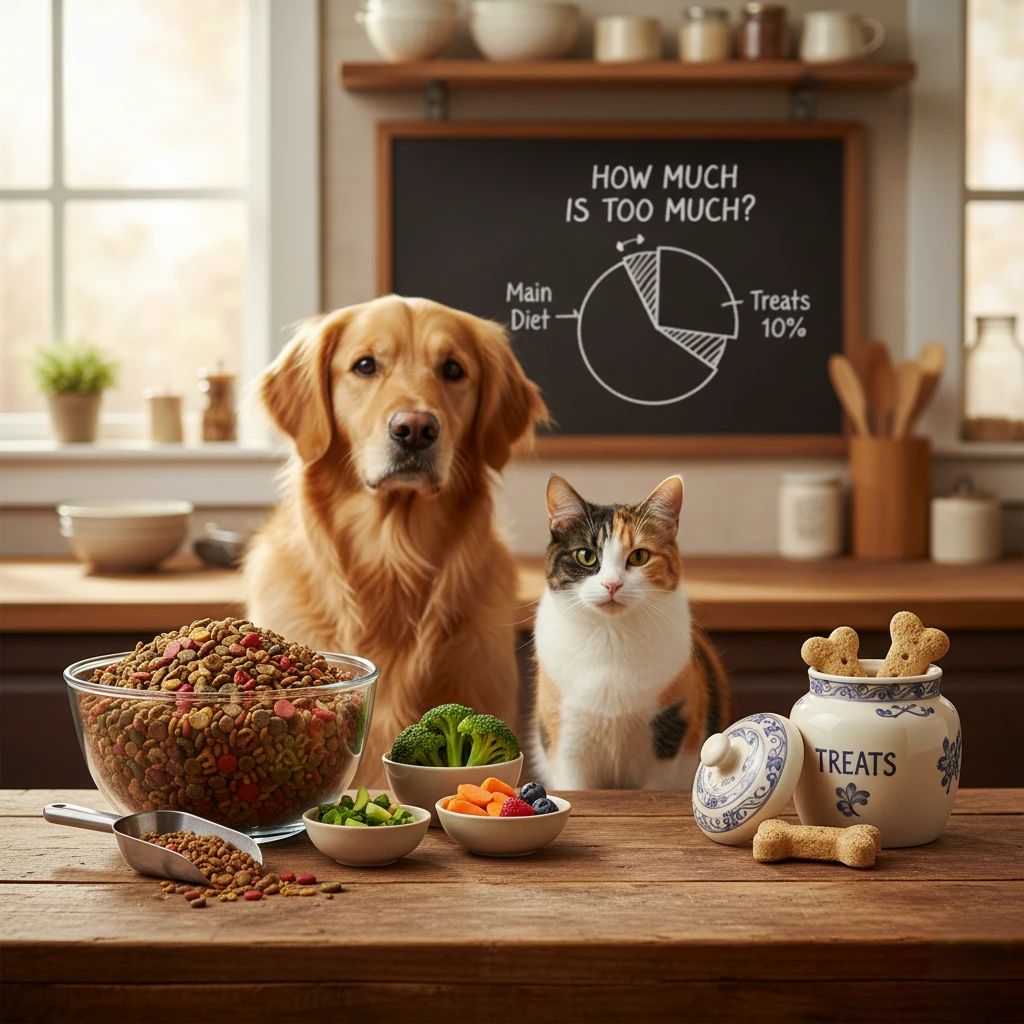As pet parents, we all love spoiling our furry friends. Whether it’s a crunchy biscuit, a chewy snack, or a tasty bit of chicken, giving treats is one of the ways we show affection. But the big question is—how much is too much? Understanding the right balance of treats in your pet’s diet is crucial for maintaining their long-term health and happiness. With pet obesity on the rise and nutrition awareness becoming a trending topic, now is the perfect time to explore the role of treats in a balanced pet diet.
Why Treats Matter in Pet Nutrition
Treats play an important role beyond just rewarding good behavior. They can be used for training, bonding, and even providing mental stimulation. Many pet owners use treats to reinforce commands, calm anxiety, or show love. However, not all treats are created equal. Some are packed with sugar, fat, and artificial additives that can negatively impact your pet’s health.
When used responsibly, treats can complement your pet’s main diet by offering additional nutrients or serving as functional snacks—like dental chews that help reduce plaque or joint-support treats with glucosamine and chondroitin. The key is moderation and choosing the right type of treat.
The Science of a Balanced Pet Diet
A balanced pet diet consists of the right ratio of proteins, fats, carbohydrates, vitamins, and minerals. According to veterinarians, treats should make up no more than 10% of your pet’s daily calorie intake. This ensures that your furry companion gets most of their nutrition from their regular food, which is formulated to meet their specific dietary needs.
If your pet’s daily calorie requirement is 500 calories, treats should not exceed 50 calories a day. It’s easy to underestimate how quickly small snacks add up, especially when you’re handing out treats multiple times a day. Tracking your pet’s intake and adjusting accordingly helps maintain a healthy weight and prevents health issues like obesity, diabetes, and heart disease.
Common Mistakes Pet Owners Make with Treats
Overfeeding Without Realizing It
One of the most common mistakes is giving treats too frequently. Many pet owners reward their pets every time they do something cute or simply make eye contact. While it’s adorable, those extra calories add up. It’s important to limit the number of treats and use other forms of affection—like belly rubs, playtime, or verbal praise.
Choosing Unhealthy Treats
Not all treats are equal. Some commercial options contain artificial colors, preservatives, or unhealthy fillers. Always check the ingredient list and avoid treats with excessive sugar, salt, or fat. Look for grain-free, high-protein, or natural ingredient labels to ensure you’re choosing the healthiest option.
Ignoring Portion Size
Even healthy treats can become unhealthy if you give too many. Cut larger treats into smaller pieces to make training sessions longer and more rewarding without increasing calorie intake. This trick works wonders for small dogs and cats who don’t need large quantities.
Healthy Alternatives to Store-Bought Treats
You don’t always have to rely on packaged treats. Many pet parents are now turning to homemade pet snacks using whole, fresh ingredients. For dogs, safe options include small pieces of carrot, apple, or plain cooked chicken. Cats may enjoy tuna flakes or freeze-dried meat. Always research which foods are safe for your pet species, as some human foods—like grapes, chocolate, and onions—can be toxic.
Trending pet nutrition now emphasizes functional treats—snacks that serve a purpose beyond flavor. Examples include:
- Dental chews that reduce tartar buildup
- Skin and coat treats rich in omega-3 fatty acids
- Joint support treats with glucosamine
- Calming treats infused with CBD or chamomile
These are not just indulgences—they contribute to your pet’s wellness when given in moderation.
Training Treats vs. Regular Treats
Training Treats
Training treats are typically small, low-calorie, and easy to chew. They are designed for repetition, allowing you to reward your pet multiple times during a session without overfeeding. These are ideal for obedience training, crate training, and agility exercises.
Regular Treats
Regular treats are usually larger and more calorie-dense. They are meant for occasional indulgence, not daily use. Think of them as your pet’s version of dessert—a once-in-a-while delight rather than a dietary staple.
Mixing both types smartly can help maintain balance. Use smaller treats for daily training and reserve the larger, more indulgent ones for special occasions.
Understanding Pet Treat Labels
Decoding pet treat labels can be confusing. Here’s what to look for:
- High-quality protein sources listed as the first ingredient (like chicken, beef, or salmon).
- No artificial preservatives such as BHA or BHT.
- No added sugar or salt.
- Limited ingredients for pets with allergies or sensitivities.
Organic and natural treats are trending in the pet care industry, as more owners seek transparency and sustainability. Brands that use responsibly sourced ingredients and eco-friendly packaging are gaining popularity among conscious consumers.
How to Tell If You’re Over-Treating Your Pet
If your pet is gaining weight, becoming less active, or experiencing digestive issues, you might be overdoing it with the treats. Other signs include refusing regular food or becoming overly fixated on snacks. A good rule of thumb is to observe your pet’s body condition regularly—if you can’t easily feel their ribs or notice extra fat deposits, it’s time to cut back.
Consult your veterinarian if you’re unsure about your pet’s ideal weight or calorie requirements. They can help design a balanced feeding plan that includes safe treat limits.
The Emotional Side of Giving Treats
We give treats not just to reward but to connect emotionally with our pets. The act of treating them strengthens trust and reinforces the bond we share. However, it’s important to remember that love isn’t measured in calories. Sometimes, your pet values attention, play, and affection even more than food.
Mindful feeding practices—like scheduling treat times or using puzzle feeders—help maintain a healthy relationship with food for both you and your pet. It’s all about balance, awareness, and intention.
Final Thoughts: Finding the Sweet Spot
A treat should bring joy, not guilt. The key to a healthy, balanced pet diet is moderation, quality, and mindfulness. Focus on nutrient-dense treats, monitor portion sizes, and pay attention to your pet’s overall behavior and weight. Remember, the healthiest pets are those whose owners care enough to learn what’s best for them.
In the end, giving your furry friend the right amount of treats is about finding that sweet spot where happiness meets health. With a little attention and care, you can ensure that every bite counts—because your pet deserves the best of both worlds: delicious treats and lifelong well-being.



